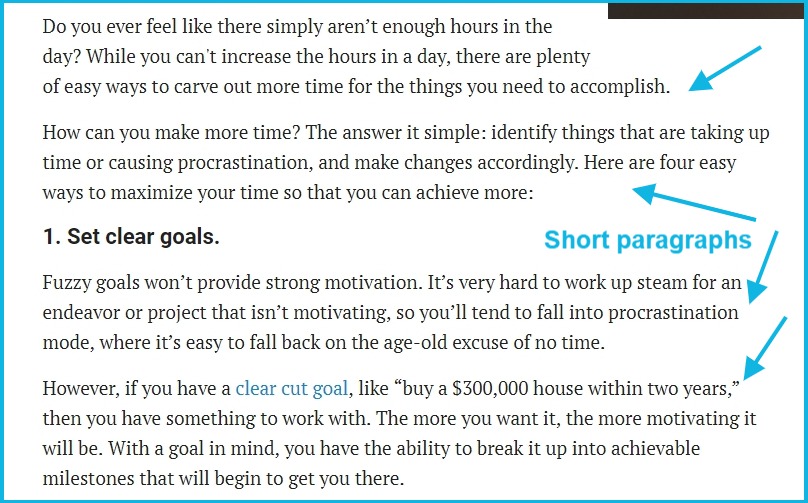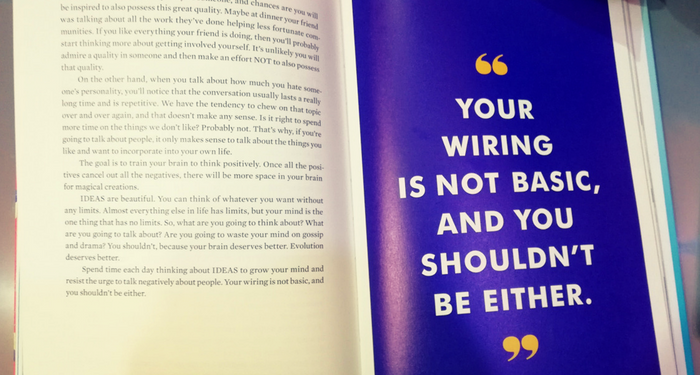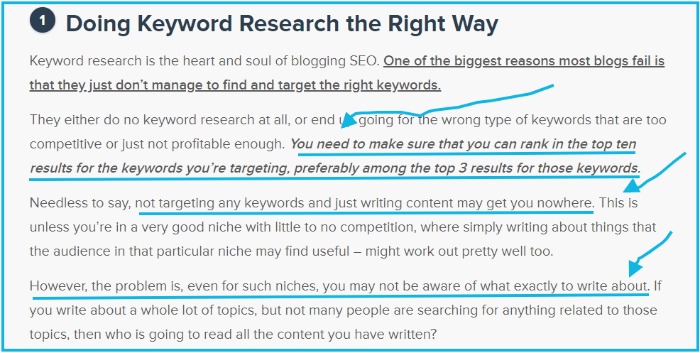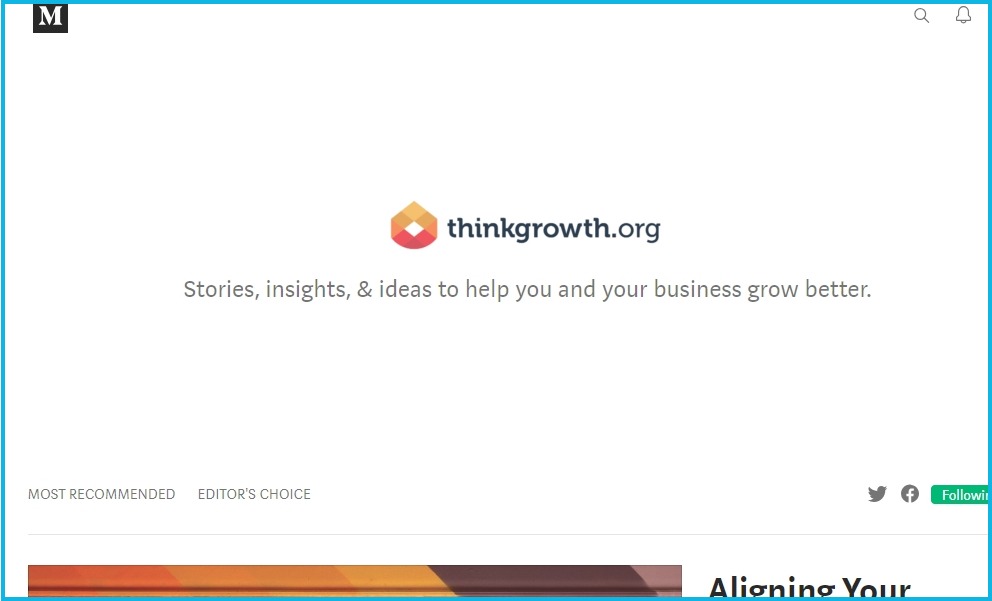The subtle difference between the perfect and average copy is that it cuts you off from the surrounding and takes somewhere else. The written content has become a vital tool in modern-day marketing, and acquiring content writing techniques is evidently beneficial from the customer engagement standpoint.
It’s been a tried-and-tested thing that content planning does great marketing if it solves the prospects’ problems and brings in the consumer attention. Marketing has significantly changed in the past few years. Today, we consume various types of content such as written, audio, video, and visuals. The mediums keep on changing, but the fundamental idea of attracting the audience and delivering the value remains the same.
Many brands use written content for prospects hunting, audience engagement, and customer acquisition, but writing that kind of content is no easy game, which is why we’d like to share the secrets of content writing that could turn things around for you.
We’re talking about the out-of-the-box approach here because hundreds of thousands of pieces of content are being published every day. It’s unbelievably difficult to grab the readers’ attention.
Two Examples
#1. Have you ever seen a balloon seller with a pile of unfilled balloons?



Chances are, you have not.
The reason is that if balloons aren’t filled up, they look tiny and go unnoticed. People look at the balloons or kids pay attention to them when they’re all filled up. That’s how the balloon seller gets the attention of the audience.
#2. You might have seen a street singer somewhere in the city. The person is always playing the music and trying to amuse the audience. People stop by and listen to the music for a while; some of them leave a small tip, and others make videos from their smartphones to share on Facebook. Everyone around seems to be enjoying it.



Sounds familiar?
What if that singer isn’t singing, and sitting on a chair with a guitar in hand instead?
I bet no one would stop by for a split second.
So by continually singing or playing the music, those street singers grab and retain the attention of the audience.
Without any further ado, let’s dive deep into the topic and find out seven content writing techniques that captivate readers’ attention:
#1: The Attractions in the Copy
It’s highly unlikely that a reader starts off reading without scrolling through the blog post beforehand. It’s the reader psychology when it comes to blog reading; people don’t want to spend time on something they don’t think is good enough. So the majority of readers scan the content before they decide to give it a try. Darren Rowse also talked about readers’ skimming in a podcast interview with Michael Stelzner.
There are lots of ways to create attractions in your copy that stop readers from walking away. The topic, however, must be very relevant and useful to the audience.
Here are a few methods you might want to try out to create attractions in your copy:
- Subheadings: The best way to attract the readers is to write subheadings that help explain the topic. What happens is that when readers first look at the content, they read the headline of the blog post, and they are likely to see the subheadings next.
- Examples: Have you ever read a blog post that narrates the point with examples? If you’ve read such a blog post, you’d know that it always helps the cause. It makes the job easier for the author to explain the point.
- Case Studies: Case Studies are rather optional. They are mostly used in the long-form tutorials and eBooks. You’re free to use case studies in your content, but the content marketing experts prefer to create separate articles based on case studies.
- Screenshots: Who wouldn’t agree with the importance of screenshots? They make the process of explaining something smoother and easier. Always use the screenshots to help guide the readers, but make sure you’re giving the due credit to the source.
- Bullets: Bullets are a great way of bringing in the attention of the audience. Not only do they encourage the reader to continue reading, but they also help describe the topic through cutting down the topic into bite-sized information.
- Storytelling: Stories make people pay attention to you. Always use stories in your content whether it’s title or example; stories entertain or educate or motivate people. They make people stick to your content or often push them to follow-up on your content.
You’d find a lot of top blogs using various copywriting techniques to captivate the audience attention.
Copyblogger does this very well.
If you go through their content, you’ll always see such attractions in the copy.
Not only do these attractions engage the readers, but they also help convey the message.
Take a look at the screenshot from Copyblogger:



It’s fascinating to see how the authors at Copyblogger write such an engaging content. If you want your readers to understand the nuances of your point of view, you better utilize these key elements that will infuse attraction into your content.
#2: Short Paragraphs
In content planning and marketing, when you write content, it’s essential that you make it easier for the audience to navigate. One of the key steps you must take is cut short your paragraphs. The reason is that it becomes more appealing to the readers’ eyes. When it seems easy to read, the readers are likely to read it. A lot of content marketing experts agree that short paragraphs are a great way of keeping the audience attention.
If you’re wondering that how you could shorten your paragraphs, then here are some recommendations:
- Bring in the clarity in your message; it will help you write to the point, and you won’t have to stretch your paragraphs.
- The right subheadings often help deliver the message perfectly. If your subheadings are irrelevant, you might feel to explain it further in the paragraph, and thus, it’d make the paragraphs longer.
- The longer the paragraphs, the difficult it seems to finish them off. A lot of readers tend to skip past the articles that have longer paragraphs. It could be a psychological signal to the reader’s mind that these long paragraphs might be boring to read.
If you want to capture readers’ attention, your content must have shorter paragraphs. Otherwise, you’d end up writing rather an unattractive piece of content no matter how good your grammar skills are. It has nothing to do with the writing style or vocabulary either. It’s more of a mind game, which makes your copy better.
For instance, take a look at this article from Entrepreneur.com:



It validates my point of writing short paragraphs. A lot of authors and bloggers agree that writing shorter paragraphs help retain the attention of the audience.
Problogger is a popular blog about blogging; if you go through the articles on Problogger, especially written by Darren, you’ll notice that almost all articles have short paragraphs. Top bloggers know this secret, which is why they prefer writing shorter paragraphs.



So one of the vital content writing techniques I could give you is writing short paragraphs.
#3: Images that Narrate
I can’t emphasize enough; images do help the content writing process. Not only do they help to optimize the written content from the SEO viewpoint, but they also deliver the narrative of the author to the audience.
When it comes to grabbing the attention of the audience, there are different ways to do so. Images are one of the best tools in this regard. The reason being they stand out in the text and attract the eyeballs. They’re the perfect attention possessor and stop readers from clicking through to the next tab.
For example, this screenshot is taken from a blog post of ContentStudio:



This example clearly states what I’m trying to say here. You have to have images that support your point as well as help you narrate the core idea of your proposition. If you dig deeper into that blog post, you’ll see that there are some images used in it, which are translating the message for the better understanding.
There is no doubt that visuals are a great strategy of stealing the attention of the readers or make them hold on to your content for a little longer.
There could be different methods of using the images in your content. Here are the most popular ones:
Gifs: If you read a lot of content on the web, you might have seen some gifs in the content somewhere. Gifs are small video clips turned into images. The websites like EZGIF and GIFMaker are widely used platforms to create the gifs.
Infographics: Infographics are long-form images with information written on them. Both the design and information on the infographics make them helpful for the audience. These infographics are often uploaded to Pinterest, but bloggers and digital marketing experts also publish infographics in their blog posts. You can make infographics using the tools like Canva, Infogram, or Easelly.
Featured Images: A featured image is a blog post’s image which appears in the snippet of the blog post on the homepage, and usually the same image shows up at the top of the blog post when you open up the blog post. Some bloggers write text on their images, and others use simple images. The size, however, depends on the blog layout. I once wrote a blog post and explained how I make featured images for my blog.
In-post Screenshots: You might have noticed that I use screenshots to make my point clear. It’s not just me; many pro-bloggers use screenshots to help guide their readers. Adding in-post screenshots is a great way of educating the audience. One of the best practices you could do while adding the screenshots is that try to link to the source somehow as a credit so that the readers could also check out the original content or page. It also looks professional when you link to the source because it cuts off the ambiguity in your argument. I use Nimbus chrome extension for taking the screenshots.
Shareable Images: If you follow content marketers and SEO experts, you might have seen some infographics with embedded code beneath them in their blog posts. They permit their readers to use their infographics using the embedded code they provide. It works both ways; they get a backlink, and the reader gets to use an infographic image on the blog. In addition to that, some bloggers design Pinterest-oriented shareable images for readers to share on the Pinterest.
So the point is that if you aren’t using images that help share your narrative, you’re missing out this amazing opportunity to connect with the readers. Similarly, it’s also important to use the good-quality and effective images that transform the message to the recipients. In my opinion, a blog post looks unattractive and dry without, at least, one image in it.
#4: An Expected Turn
When it to comes captivating readers’ attention, it’s difficult to do so sometimes when the topic seems to be getting boring. You might not feel that your blog post is getting boring, but readers would feel that they’re reading but not getting something out of it.
Do you know what happens next?
Readers stop reading and check FACEBOOK!
Then, they may stumble upon a funny cat video that would lead to more videos.
Now, 20 minutes have gone – either the lunch break is over, or they have to go to bed because it’s getting late.
Game over, folks.
If you want to write content that retains the readers, then you have to do what Lilly Singh did in her book “How to be a Bawse” because I’ve gotten the point #4 while I was reading her book. If you don’t know who Lilly Singh is, then you should check out her YouTube channel; she has over 14 million YouTube subscribers.
What I learned from her book is that she keeps your attention throughout the book. She does that using different things. Here are three of them:
- She Used Pictures
There are loads of pictures of her in the book, which you’ll find across all chapters. In fact, there are some pictures of her tours and meeting people from different parts of the world. She used her photographs to tell the stories of her struggle, hard work, and success. It did work really well. I think that pictures are a perfect thing to keep the readers going.



- She Quoted Key Points
One of the best things she did in her book was using the full pages once in a while to quote an important point at the end of the chapter. Not only did she reiterate the point, but she also made sure that the readers pay attention to the takeaway. It taught me that it’s not necessary to use someone else’s quotations, but you can also quote the key point in your copy in a way that it looks appealing.



- She Gave Exercises
After every few chapters, she’d ask her readers to fill up the exercise or answer something in the space given below. It’s a great way of pushing readers to take action. From a content writing standpoint, if your reader is actively participating or paying attention to what you’re saying, then you’re winning.



I’d highly recommend using such unexpected turns in the content. When we publish content, we have the liberty of using the pictures, videos, and other stuff; it’d surprise the readers and engage them even more.
#5: Humility in the Voice
If you’re not an empathetic writer, you’re not doing it right. One of the content writing techniques is to make your reader comfortable. You’re probably sharing a lot of stuff that the majority of the readers don’t know. So if, even unintentionally, you sound like you’re better than them or the readers should be ashamed of not being aware of something, then you’re the bad guy because you’re humiliating your readers.
On the contrary, you must have humility in your voice. The readers must think that you’re sincere with them and more importantly want them to win. Sometimes, especially in blogging, if you’re guiding your readers in detail and that information would have cost them a fortune otherwise, then they’ll be there for you forever.
This article points out Abraham Lincoln’s famous speech known as Gettysburg Address in which he used the first-person plural pronouns such as “we” and “our” throughout his short speech.



The author Tim David explained about the first-person plural pronouns and said, “They help develop rapport and create a sense of togetherness.”
What we can learn from the United States’ 16th President’s speech is that we must know the use of words; it can create a significant impact in the long run.
When it comes to writing content, it’s important to build a connection with the audience, and you can’t build that trust if your words are harsh and you don’t seem to care about your readers.



Tony Robbins wrote in his book Unlimited Power, “Do people form clubs of people who are different from them? No, they get together as fellow war veterans or stamp collectors or baseball card collectors, because having something in common creates rapport.”
It shows that if your readers don’t believe that the author and they are on the same page, they might not be able to connect with you. The empathy has a critical role in this regard.
So one of the content writing techniques you should learn is bringing in empathy and courtesy in your voice, and therefore, choose the words accordingly.
#6: Solving the Industry’s Problem
When you’re using your blog to publish niche content, it means you have a chance to reach out to the audience that might listen to you. When such an opportunity comes along, you’re likely to touch a few problems that your industry might be facing. In this scenario, addressing an issue of your industry and providing a solution could be a game changer for your business. The reason is that a lot of people might land on your content, if everything works out well, and read what you’ve suggested.
The readers’ attention is a tricky business. There is no guarantee whatsoever that your article would get attention; sometimes, people find an issue and publish multiple blog posts on that, and not a single one of them works well for them. On the contrary, sometimes, we publish one piece of content on our blog, and search engines quickly rank that article on the first page.
All of this begins when you’re aware of your industry. Your research would set the tone of finding the industry’s problem, and therefore, the next part of the job is to create content that helps the target audience.
I stumbled upon an article written about the Blog SEO. Take a look at this screenshot:



If you notice the underlined parts of the screenshot, you can read out that the author is saying the similar things what I just said in this very point, which are:
- Ranking on the first page
- Targeting the right keywords
- Awareness of topic
It’s understandable that your grip on the industry’s issues is necessary so that you could sit dolocations of your websitewn to reflect on the industry’s problems and come up with a solution. And, there won’t be a better place to publish that problem-solving content than your blog.
Hence, we learned that solving industry’s problems could be a cool writing technique that might bring in some eyeballs around.
#7: Publishing on the Right Platform
Content planning isn’t just about choosing the topic and putting out articles on those topics. There are many factors such as the target audience, the timing of the article, number of words, and the list goes on.
You’ll always find bloggers and content marketers discussing the topics, keywords, numbers, and tools. What you might not hear these people talking about is publishing on the right platform.
It doesn’t mean you shouldn’t publish on your blog; your blog is a great place to put out content on a consistent basis. A lot of companies have their blogs on sub-domains or sub-directories of their main URL.
Sure, WordPress provides a great content management system which helps you in running a website and publish blog posts alongside. Nowadays, there are optimized and mobile-friendly WordPress themes available that display your blog posts perfectly at different locations of your website.



Recently, HubSpot’s ThinkGrowth blog caught my attention. I learned that now Hubspot runs a blog on Medium. I remember that they previously had a publishing system of their own which was native to their website. I tried to double-check it by visiting their website and didn’t find their marketing blog link. I realized that they opted Medium to publish their content.
It got me thinking… why would they do that?
My best guess is that they want to milk every opportunity that they could from another platform and might end up attracting a whole bunch of new readers on the Medium.
So I learned from this example that if you want to captivate readers’ attention, you have to choose the right platform to publish your content.



Gary Vaynerchuk started posting his vlogs and other videos on LinkedIn. He also talked about it that he wanted to test out that how videos work on LinkedIn.
The takeaway from this point is that you have to be aware of the publishing opportunities that you may come across and how you can take advantage of those opportunities. All you need is to know what you’re doing and how it can bring in more attention by writing content for the right audience. Guest posting is a perfect example of publishing content on another platform. You can also put out your articles on LinkedIn.
Your Part
I’ve taken this opportunity to share with you some of the best content techniques I learned so far in my content marketing career.
Content writing doesn’t always revolve around grammar and the keywords; it’s gone far beyond that.
My purpose was to share ideas that would make your readers come back to your blog.
Sure, we always want website visitors to convert into leads, but if you want to win a customer, you better have something in your pocket that attracts them. If you go through all seven points again, you will notice that I emphasized on the things such as help, values, and empathy throughout the article. I started applying all these things in my content, and it has given nothing but great results.
I hope these content writing techniques would help you create the best content on your blog and you end up building a warm relationship with your readers.
What’s your best content writing advice for all the bloggers and marketers reading this blog post?
Wasiq Naeem
Wasiq Naeem is a content and digital marketing veteran who is passionate about his writing. Extensive research and producing high-quality content is just another day at the office for him.






